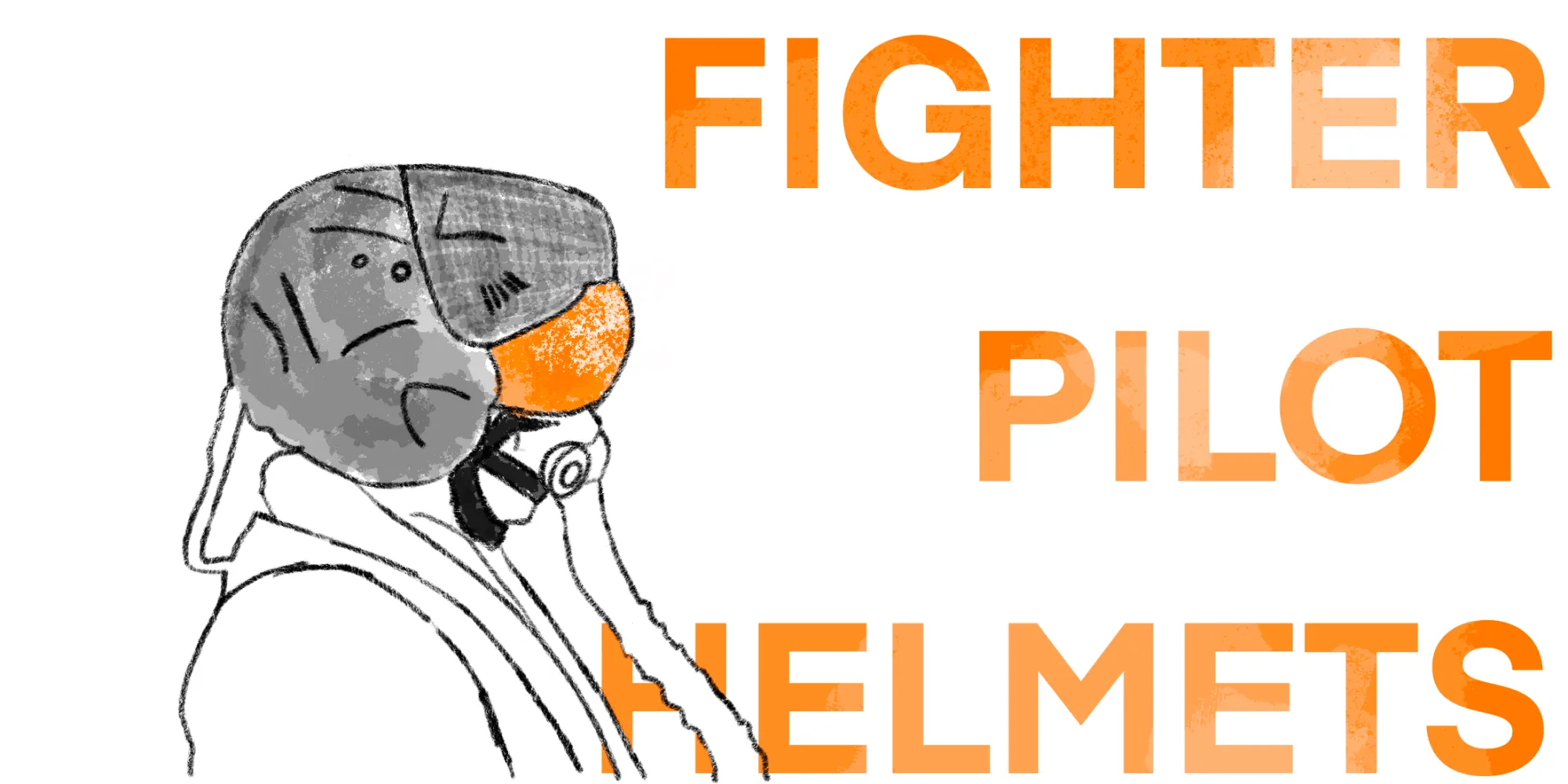What Makes Fighter Pilot Helmets so Freaking Cool?
Explore the advanced world of fighter pilot helmets. Learn about their evolution, technology, and impact on aviation safety and performance.

Fighter pilots have been wearing some type of helmet since the day the Brits first strapped a machine gun to the Vickers F.B.5 Gunbus. “Absolutely men-uhl”, as they’d say.
Although we’ve come a long way since the rudimentary leather skullcaps, the basic premise of ear, eye and (marginal) skull protection still remains the same today. Except now not only do fighter pilot helmets help reduce the negative effects of the noise of the external environment, they also help amplify the signal to make modern-day fighters even more lethal.
History and Evolution of Fighter Pilot Helmets
So where did it all begin? What people don’t realize is that it’s actually freezing cold when flying at altitude, especially so in the case of open-air cockpits such as those flown in WW1. Pilots would wear lots of leather lined with fleece, scarves, caps, and eye protection at a minimum. Snoopy’s famous getup was spot-on for the times and the leather flyer’s cap with the goggles became iconic for pilots of that era.

Moving into the WW2 era, fighters were now equipped with radio equipment directly wired into their helmets. This increased situational awareness (SA) between aircraft airborne, laying the foundations for tactical communication and maneuvering as a flight of multiple aircraft.
As time progressed, helmet materials improved, increasing both pilot comfort and SA in the air. Although an external oxygen supply was introduced during WW2, it wasn’t until the 1950s that it was integrated into the helmet with the step into the Jet Age. This new age, however, would bring an entirely new set of design requirements for fighter pilot helmets as they would now fly higher, faster, and under G loads never seen before in aviation. Helmets were about to take a massive leap into the future.
Design and Features of Modern Fighter Pilot Helmets
What is now the minimum standard for modern fighter pilot helmets would have given Snoopy a red rocket back in his day.
Light, comfortable, all-in-one units that make flying a 100-decibel aircraft sound as quiet as Prius. Hearing protection, integrated polarized visors, state-of-the-art OBOGS (On-Board Oxygen Generation System) masks that deliver limitless oxygen directly to the pilot are all standards for today’s aircrew. These advanced helmet features, combined with the ability to protect the pilot in the case of a bird strike or ejection make modern-day jets much more capable.
The best part? All these great safety features and we’ve still retained the most sacred aspect of everything pilots do: looking cool. Even Star Wars would have to thank modern jet pilots for the inspiration!
The Next Generation of Fighter Pilot Helmets
The introduction of engineering marvels such as the fifth-generation F-35 Lightning and the fourth-generation Block Three F/A-18 Rhinos represents a significant leap in aerial combat capabilities. Alongside these aircraft, the helmets designed to protect pilots have undergone their own incredible advancements.
Both the F-35’s Helmet Mounted Display System (HMDS) and the F/A-18’s Joint Helmet Mounted Cueing System (JHMCS) integrate valuable aircraft data and symbology directly into the pilot’s visor. Being able to see critical flight information wherever the pilot’s head is pointed and not having to look down at the aircraft instruments is a massive leap forward in boosting situational awareness. Additionally, the F-35’s HDMS also allows for night vision capabilities and for the pilot to actually see through the frame of the aircraft using augmented reality technology.
Fighter pilot helmets stand as a testament to the remarkable advancements in aviation technology and safety. From the humble beginnings of leather caps and goggles to the cutting-edge systems integrated into modern helmets like the F-35's HMDS and the F/A-18's JHMCS, these helmets have evolved to enhance not only the protection but also the performance of pilots. As we look to the future, the next generation of fighter pilot helmets promises even greater integration of data and augmented reality, further revolutionizing aerial combat capabilities.
Amidst these advancements, one thing remains unchanged—fighter pilots will forever be the coolest-looking nerds in the skies.
